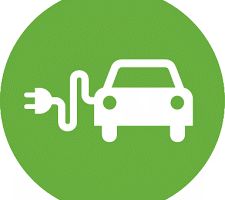The majority of our days is spent at work. Even so, a surprisingly small number of us think about the environmental impact of our office lifestyles on the planet. Although there are many reasons as to why management should adopt sustainable business practices (reducing bills being one of them), companies seem to struggle to implement green measures into their daily routine. Thankfully, even if your company hasn’t “gone green” as a whole, there are things you can do and habits you can adopt as an employee to make your workplace more eco-friendly.
Start a sustainability team in your office
A sustainability team can both raise awareness and accomplish more towards your organizations mission of making it more green and sustainable. Projects for the team could include starting or enabling a more successful recycling program, and helping to inform purchasing decisions on energy-efficient appliances and green cleaning supplies.
A team like this can also educate staff through informational sessions with help of local NGOS or Green consultants.
“Employees engaging one another is more effective than memos from the top”. This group can conduct monthly ‘inspections’ looking at the power/gas meters, amount of green office supplies ordered / consumed, etc., and keep record to gauge positive or negative movement towards above mission.
A dedicated name for this group with periodic recognitions by senior management will make this group more motivated towards reaching its set targets more energetically. Suggestions can be like Green Warriors, Green Team, Green Gang, Green Volunteers etc.





Create monthly / quarterly green activities by engaging your staff
Monthly team challenges can be a fun way of combining competition and going green. For example, you can challenge the office to go a month with no plastic bag, eating disposables, printing papers etc. and reward those who stick with it by offering small prizes, appreciation letters, recognizing them in town-halls etc. Some of the engagement activities may include:
- Waste donation drive for recycling – This may include Newspaper / Plastic / E-waste
- Best out of Waste” competition
- Newspaper bag making workshop
- Waste segregation techniques followed by Quiz
- Waste REUSE workshops
- Awareness sessions on several aspects of eco-friendly practices
- Workshops on waste management techniques
- Off-site engagement activities for employees
- On-site engagement activities for employees
Opt for sustainable stationary & gift products
There may not be room in your budget to buy exclusively sustainable products, but you can focus on certain areas that have a huge overall green impact, such as recycled stationary, café disposables, recycled gift articles or more efficient electronics & devices. A list may include:
Stationary items made out of Recycled materials:
- Business cards,
- A4 sheets’ Rim
- Notepads of different size
- Recycled paper pens
- Recycled paper pencils
- Envelopes of different size
- Desk organizers
- Recycled tissue papers for washrooms
- Recycled tissue papers for cafeterias






Opt for sustainable gift products made out of Recycled materials:
Gift bags:
- Jute bags of different size
- Cloth bags of different size
- Newspaper bags of different size
- Brown paper bag of different size
Gift articles:
- Ceramic mugs of different size
- Steel flask / bottles of different size
- Wooden pen drives
- Wooden key rings
Opt for sustainable cafe disposable products made out of Recycled materials:
- Wooden plates & bowls
- Wooden cutleries – Spoon, Fork, Knife
- Recycled paper cups
- Recycled paper mixed cafe tissue papers
- Recycled paper mixed facial tissue papers
- Recycled paper mixed assorted tissue papers
- Bins of different size and specification with green messages on bins




Create awareness towards Turning off electronics, lighting and heat when not in use
Instate a strict “everything-off-at-night” rule. Upon leaving the office, meeting rooms, training rooms etc. all of your equipment must be switched off at the main plug.
Have several eco-messages all across your electrical and electronic devices in your office premises.
Create a concept of Green-Jar to engage and motivate your staff under some discipline to create a much wider impact all across your workspace. If someone forgets to switch-off lights, they have to put some money in our Green Jar which gets donated to an environmental fund. Let your Green Team manage and monitor such activities.
Lay off the thermostat
Are you one of those people who freeze in office spaces during the summer? Don’t worry, you’re not sick. The building is most probably over-air-conditioned. Cut down on energy and save a lot of money by turning off the AC in empty rooms, or raising its temperature.
Workplaces are often over-air conditioned in the summer months. A degree change in air-conditioning units can make a whole lot of change towards overall energy efficiency of organization. A more vocal approach by management may engage employees to contribute towards this initiative by equally allowing the office to be a comfortable workspace while reducing the energy use adequately.
Smaller office spaces might not notice a dramatic change like large ones, but little adjustments done with intention build positive habits that make a difference over time.




Go paperless
The greenest paper is no paper at all. Corrections, revisions, and updates on printed documents contribute to 90% of all office waste in the US, and remaining 10% is taking up space in storage facilities as per a recent survey. Keep things digital whenever possible. It’s as easy as keeping digital files on your computers and mobile devices, not file cabinets. Also, get in the habit of reviewing digital documents on-screen, rather than printing them out while participating in a meeting / discussion.
According to a 2014 study conducted by “Catalog Spree and PaperKarma”, if the US alone cuts its office paper use by just 10% by moving to digital, it would reduce its greenhouse gas emissions by 1.45 million metric tons—the equivalent to taking 280,000 cars off the road for an entire year.
Other ways to go paperless include printing less in general, and asking vendors to offer e-statements and invoices instead of paper statements. Setting up automated payments further reduces paperwork by eliminating the need for printed cheques.
Bring a desk plant
If you’re able, offer or allow your employees to bring in a desk plant to workplace to improve indoor air quality and bring some nature into the office environment. Plants produce more oxygen, offsetting any chemicals released into the air by office furniture and making a cleaner, happier space for your people to work in.



Encourage green commuting
Carbon emissions resulting from car exhaust are amongst the top three causes of air pollution. The less cars on the streets, the better.
Companies can encourage employees to lower commuting emissions by walking, biking, carpooling, or taking public transit to the office, and offering incentives to do so. Offering bus services for your employees to travel To & Fro can be ideal ecofriendly step while offering enormous comfort and safety to your employees.
Offering work-from-home policies can also reduce your company’s carbon footprint. The average American has a work commute of about 25 minutes each way, and flies about 17 hours per year. Reduce employee travel whenever possible. There are a number of great web/video conferencing tools out there. It saves the company budget, but it also reduces carbon footprints by avoiding unnecessary travels as much as possible.
Maximize natural light
The World Green Building Council reports that employees working near sunlit windows have a 15% higher production rate. Natural light sets the body’s circadian rhythms, which control awakening, falling asleep, synthesizing vitamin D and digestion. Indoor light, however, is a major disruptor. If possible, move workstations to within 25 feet of peripheral walls with windows.
Research has shown that working in natural light increases productivity by 15%. Moreover, including healthy habits and changes in your lifestyle, such as walking and spending your working hours in fresher air, improves the mood and energizes the body.
Relying more on natural light when possible also saves energy. Also, consider installing a smart power strip at every workstation, replacing all lighting fixtures with LEDs, as well as incorporating sensors and timers for office lighting. You’ll reduce energy consumption and costs on things like utility bills.




Embrace renewable energy
Green power sources, including solar and wind energy, are more accessible than ever, with options including rooftop solar installations and large-scale wind farms. Organizations of any size can make this switch with some concrete efforts depending upon their size and preferences.
One easy way to make your office greener is to shop for your electricity supplier and choose a green energy plan. Almost every electricity supplier offers green energy plans that are generated by renewable energy sources, primarily wind and solar. These green electricity plans are priced very competitively compared to traditional electricity plans powered by coal or natural gas.



